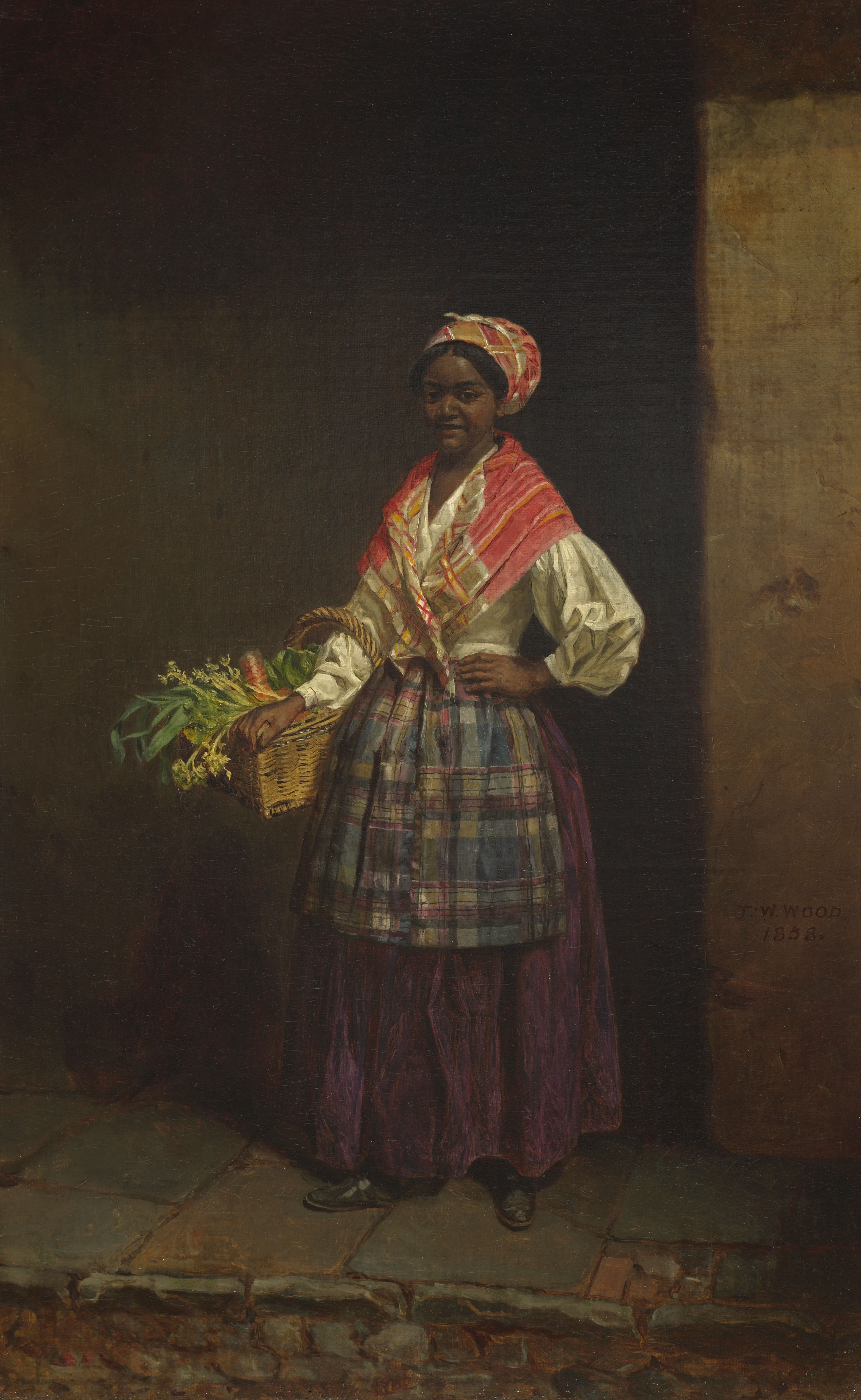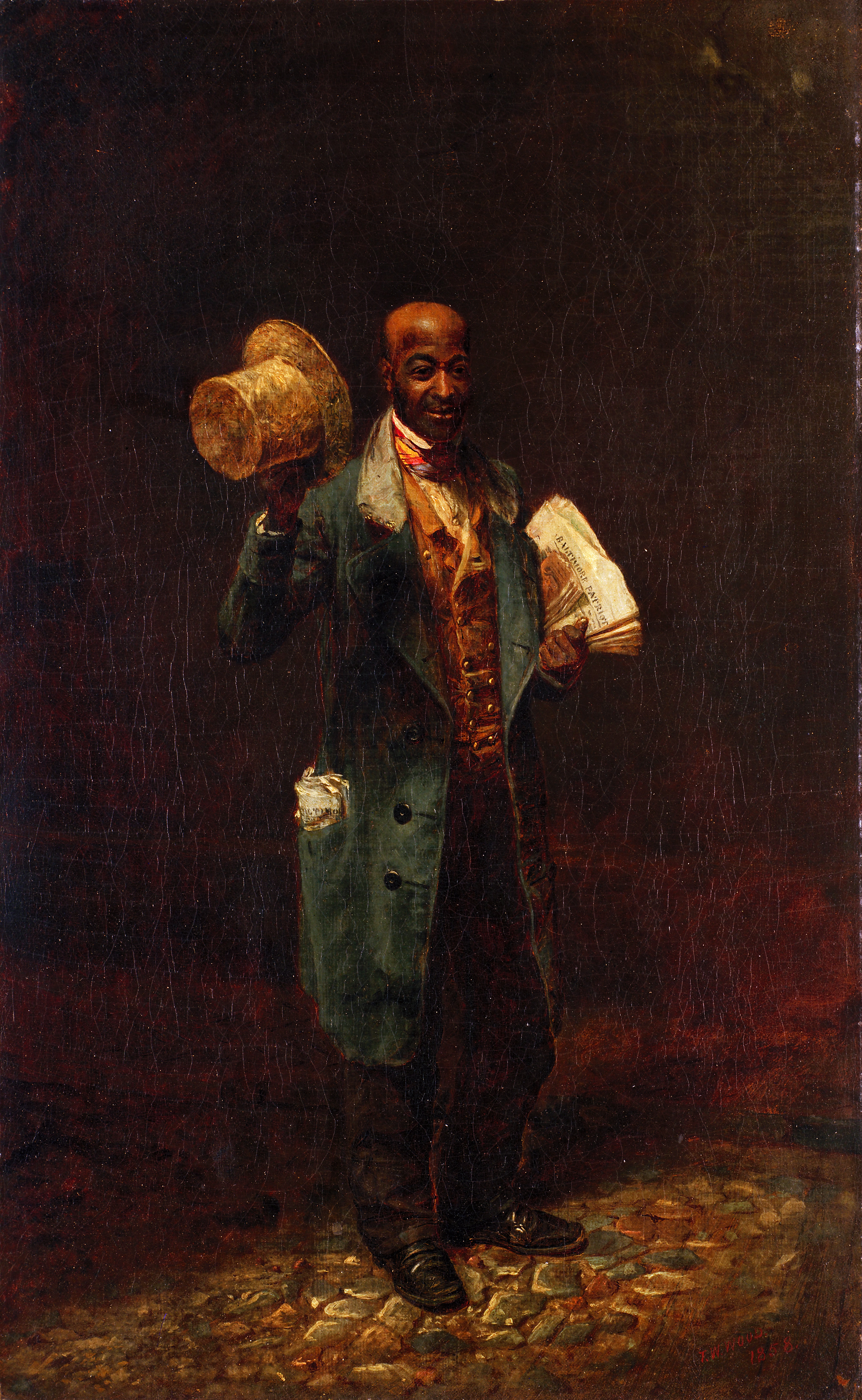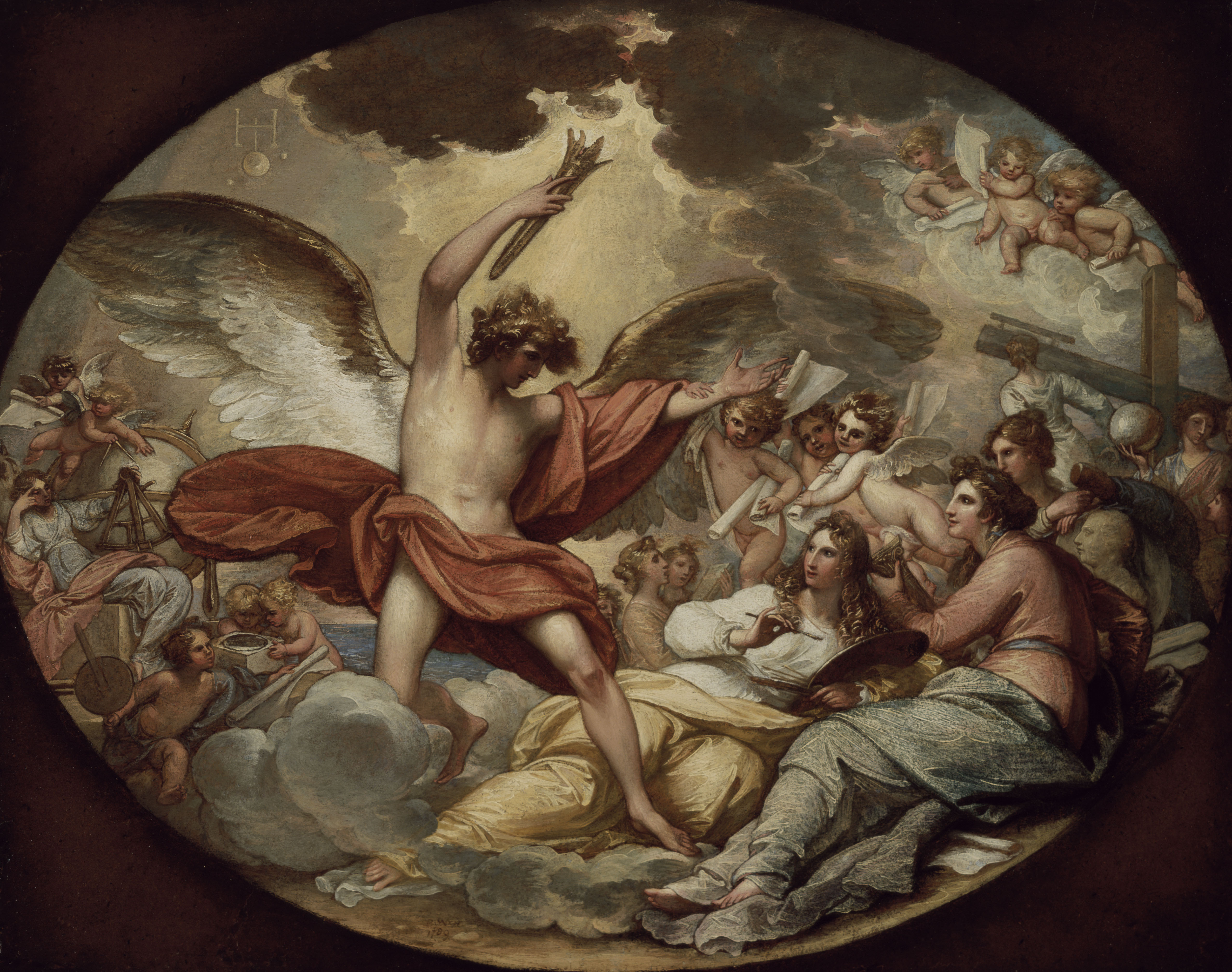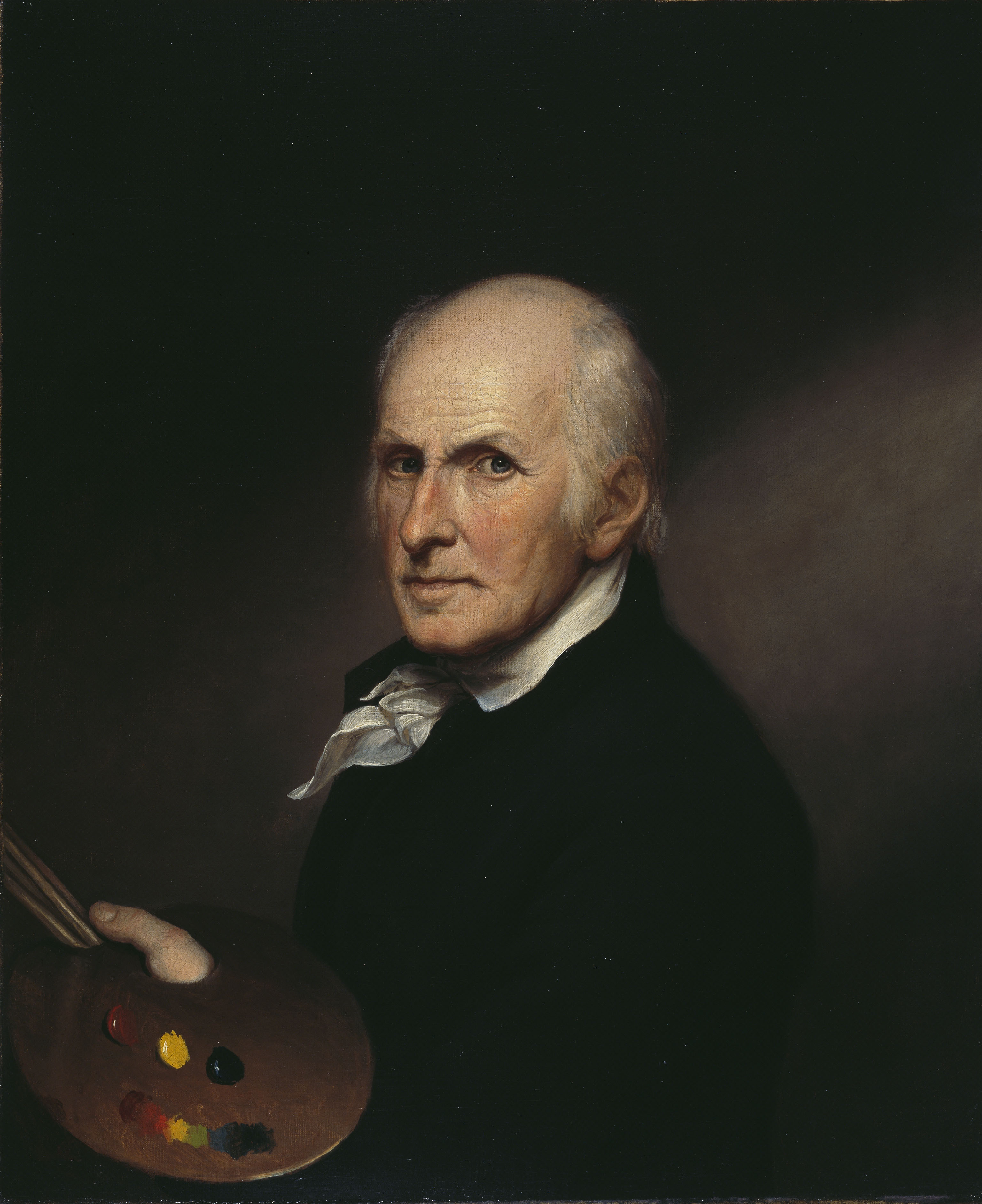Market Woman

Who do you interact with when you shop in your neighborhood?
Wood painted Market Woman, with its unidentified subject, as a companion piece to Moses, The Baltimore News Vendor. It is not certain whether the artist depicted a free woman buying or selling vegetables, or an enslaved woman doing the daily food shopping for a white family. Though free blacks could work as street vendors, they were denied many basic civil rights, including citizenship and the right to vote.



